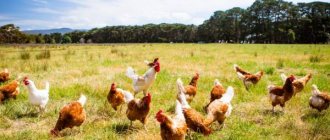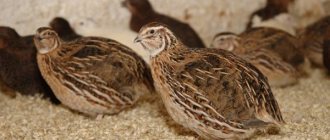Business relevance
Parrots are very beautiful, living birds. Some of them can repeat simple words and phrases, copy the sounds of other birds and animals. Males are especially capable of this.
Many people want to have parrots. After all, the desire to take care of our little brothers is inherent in human nature. But in a multi-storey building, not everyone can afford to have a dog or cat. It is easier to keep a parrot, and there is a lot of joy from it.
They multiply quickly, are small, and are easy to keep.
Therefore, the parrot breeding business will certainly be successful.
What risks might you face?
Breeding parrots is an activity that requires full responsibility. After all, these are not vegetables or flowers, which can simply be thrown away if things go wrong, these are living beings. This is why it is so important to choose a psychologically compatible pair of parrots that can build a strong family. Otherwise, they will quarrel and fight, and if they don’t get along initially, then “bringing them together” is useless, you will have to look for another couple.
In addition, there is a risk that the female may abandon her chicks, and if another female does not take care of them, the babies are guaranteed to die. Many people often have to face such risks, because it is impossible to calculate and predict how this or that couple will behave.
Types of parrots
Not all types of parrots are suitable for breeding at home. It is best to breed medium-sized parrots in captivity:
- Wavy, which give birth to offspring up to 4 times a year; The price on the market is 500-3,000, in a pet store 500-2,000 rubles.
- Corellas breed chicks all year round. You can buy it at the poultry market for 1.5 thousand rubles; for private entrepreneurs from 2 thousand rubles.
- Lovebirds (price from 1.2 thousand rubles).
- Ozherelovs.
- Rosella.
- New Zealand kakariki (jumping, live on the ground).
- Pirrura . May be small or medium in size. They don't chew wood or scream. Young people need not be separated from their parents.
Growing large parrots:
- cockatoo;
- Amazon, the price of a fosterling is from 30 thousand rubles;
- macaws from 3.5 to 50 thousand dollars;
- gray Price 10-40 thousand rubles. natural habitat, 60 thousand fosterlings;
- Alexandrian (hatch 2-4 eggs).
Not only talking parrots are bought, but those that can speak a couple of phrases cost several times more.
Large parrots are:
- Prirodniki (imported from other countries). Cheap, but often infected with helminths. They tame themselves.
- Raised in cages with their parents. The costs are high, the value is not very good. In Russia, they are almost never grown in this way due to low profitability.
- Foster - taken from the nest. Additional feeding costs are high.
These birds live 15-20 years. But for breeding they take young ones, 1-4 years old. Usually they create a family once in their entire life.
Sales market: where to sell parrots
For sale, it is important to have a conclusion from a veterinarian that the chicks are free of diseases.
Main selling methods:
- Zoological shops. You can sell 10-20 individuals there at once, but the price will be lower than you can get on your own.
- Word of mouth. Write to your friends: perhaps they know who can buy a parrot chick.
- Independent sale through thematic forums and message boards.
- Independent selling through social networks.
Conditions for breeding budgies at home
- Parents must be healthy. Visually, this can be seen in the proud poses and activity of the birds.
- Incest (mating of birds from the same brood) should not be allowed. This leads to the birth of weakened chicks, which often die.
They buy two lots of parrots. Marks of different colors are attached to their legs so as not to pair descendants of the same genus in the future.
They pair so that in one flock there are males of only one mark color, and females of another.
It is better to mate in late summer-early autumn. Room temperature 18-20 degrees, daylight hours from 15 hours. To prolong it, light it with artificial sources.
Birds form pairs. The female carries sawdust in her beak. This indicates that she is about to lay eggs. While laying eggs, chalk and crushed shells or special mineral supplements are constantly added to the feeders.
The female hatches 4-7 chicks at a time. They are grown for approximately 2 months.
They allocate a separate area in the room so that no one disturbs them.
After the chicks hatch, they are fed with a mixture of crushed eggs, dandelion leaves, lettuce, spinach, and radish leaves. They give carrots and apples.
Parrots are fed millet of different varieties, flax, hemp, and oats. It is good to germinate grain before feeding. The amount of vitamins in it is tens of times greater than in dry. But they make sure that it is eaten quickly and does not sour. You can feed this grain a couple of times a week, but first carefully study the germination technology and follow it.
They do not give onions, garlic, celery, radishes, or eggplants.
The drinking bowls are washed every day. There must be water constantly.
Need mineral supplements and sand.
Do not feed nuts and seeds. They are too meaty for parrots. Sugar and salt should not be given. They don't feed you leftovers from lunch.
Birds will be happy to see branches of deciduous trees. But first they are soaked for several hours in clean water in order to remove possible parasites and contaminants.
One individual will need 2 teaspoons of food (20 g) per day.
Recommended mixtures:
- Prestige (Belgium) price 90 rub./pack. (100 g)
- Padovan (Italy). 200 rub./pack. (1 kg).
A kilogram package is enough for 50 servings.
Trill should not be given unless prescribed by a doctor for a short time.
The young are separated from their mother 2 weeks after they make their first flight from the nest.
How to properly care for chicks?
Remember that your entire business depends on proper care of the chicks. The more carefully and seriously you take this, the better for the female. After all, nesting prolongs its age, which means it increases the number of offspring. Chicks are born approximately 17-20 days after laying eggs. They are born without feathers and completely blind, gaining sight only on the 7th day of life. After 10 days, their first feathers appear and soon the chicks are completely covered with down. They will finally “turn” into parrots at the age of 3 weeks, after which they can be transplanted separately.
When the chicks grow up a little, the nest box will need to be cleaned, after waiting for the female to leave, and the “baby” should be transplanted into the box. After this, remove the old sawdust with chamomile from the nest, wipe with a damp cloth and add fresh sawdust again. This cleaning should be done once a week. You should start feeding babies in the 3rd week of their life - before that, the mother feeds them with goiter milk. To feed chicks, it is recommended to purchase ready-made food in accordance with their age. They leave the nest after a month, and finally mature at 10-12 months.
Concept development
Breeding parrots at home as a business begins with building a business plan. If breeding parrots does not bring you income, then it is not worth doing it on a large scale.
You can first get one pair to study their habits, basic care, nutrition, and living conditions.
Determine the species of parrots. The most popular parrots are the medium ones. Over the course of a year, each female will produce 15-20 chicks.
Large ones cost 3.5 -4.5 thousand rubles/piece. Breeding them is more difficult, but the profit from their sale is higher. They require more space.
Parrot breeding - pros and cons of business
Besides the fact that you just love these adorable birds, there are other advantages to business:
- this is work from home - without bosses and orders, without strict adherence to deadlines;
- starting investments will not hit your pocket hard;
- you can expect potentially high income if you choose rare large birds;
- The period of maturation of chicks is very short; after 5-6 weeks they can be sold.
As with everything, there are some drawbacks:
- caring for birds takes time;
- it is not so easy to recognize gender characteristics;
- It is desirable that the couple is not related, this will lead to degeneration of the family.
Premises requirements
It should be spacious and warm. This could be a shed with windows, a heated garage, an attic or a purpose built building. They create conditions for the birds that are close to natural in temperature and light. Indoor humidity is about 70%.
Parrots can live in fairly cold rooms, but there should not be sudden temperature changes. Some species can withstand frost up to 10 degrees. Drafts have a detrimental effect on them.
Some medium (wavy) ones can reproduce in small cells.
New Zealand kakariki breed only in an aviary. One enclosure is needed per couple at this time. There should be no holes in it that he instantly finds.
The enclosure where Rosella lives must be at least 4 m long, because it loves to fly.
Song parrots are unpretentious to conditions. Their maintenance and breeding differs in that only one pair can be kept in one room. Otherwise they will fight.
Large parrots are bred in enclosures.
To breed Alexandrine parrots, you need an aviary with a side of at least 2 m.
Provides for daily cleaning of the premises.
Premises and equipment
As for the premises, if space allows, birds can be kept in an apartment. They will feel quite comfortable. A basement, balcony, garage or other utility room is also suitable for maintenance. The main thing is to maintain a temperature regime suitable for the birds and a humidity of no more than 70%. There should be no drafts or sudden changes in temperature.
The equipment you will need are cages. You can also make them yourself. For budgerigars and other small species, a space of 60 centimeters in length and 40 centimeters in height is required per bird. For large birds the area should be larger.
It is necessary to place perches, ladders and toys in the cages. Birds need nests, which you can make yourself or buy ready-made. In addition, purchase feeders and drinkers. For all finished equipment you will need an amount of up to 30,000 rubles.
Financial part
Breeding budgerigars can serve as a model for calculations.
The cost of a parrot in a pet store is from 500 rubles.
Purchase of young animals (5 pairs) 5 thousand rubles.
Equipment 1750 rub.
Feed for 5 pairs per month 200 x 6 = 1,200 rubles.
Only 7,950 rub.
In the future, the cost of feed will vary depending on the number of birds.
Profit for the year:
A pair produces 12-15 chicks per year. From their sale they receive 6-7.5 thousand rubles.
Each of the chicks will eat 1.2 kg of food worth 240 rubles in 2 months.
All together 2880-3600 rub.
Profit 3,200-3,900 rub.
From five pairs 16,000-19,500 rubles.
Profit for the month:
At one time, 5 couples receive approximately 5 x 5 x 500 = 12,500 rubles.
For food 240 x 5 x 5 = 6,000 rubles.
Profit 6,500 rub.
You can sell not all the young animals, forming pairs from them and developing a business.
You will receive your first profit no earlier than in 3 months. In the future, it will depend on the timing of breeding.
How much money do you need to start a business?
To begin with, we recommend purchasing 4-5 pairs of parrots. This will cost you up to 5,000 rubles if you choose a small bird. Equipment will cost up to 30,000 rubles.
You will need to purchase food for the first time. You will have to spend about 1,000 rubles for a month of maintenance.
In general, to open a budgie business you will need about 40,000 rubles.
But also consider your monthly expenses, which are:
- payment for electricity to extend daylight hours;
- replenishment of food supplies.
Features, risks, disadvantages
Birds paired together must have psychological compatibility and be friends. They spend a lot of time together, preening each other's feathers. This applies primarily to lovebirds. If you form a pair by force, they may not reproduce.
Wavys nest better if there are other pairs around them doing the same thing.
To run a successful business, several species of parrots are bred.
The more parrots you raise, the lower the cost of each of them. This refers to the costs of lighting, heating, and feed.
If the mother refuses to feed the chicks, they are placed on another female.
Download for free a short business plan for breeding budgies at home (.rar file):
Example 1
How to breed parrots - tips
It is recommended for beginners to start a business with budgies. They are very unpretentious and quickly adapt to new conditions. The main conditions of detention are maintaining cleanliness and timely feeding.
In good weather, the cage can be taken out into the fresh air. The main thing is to avoid drafts and direct sunlight. Adult parrots feel comfortable at temperatures of about 25 degrees.
You need to be careful during the hatching process. It happens that the female pecks at the eggs or stops hatching them. In this case, the eggs are placed on another female.
Let's move on to purchasing equipment
An entrepreneur is quite capable of making all the cages for maintenance with his own hands, or, if the budget allows, he can purchase ready-made ones. In the second case, you cannot do without such equipment:
- Galvanized mesh;
- Feeders, drinking bowls;
- Materials for nests and nests themselves;
- Cells.
The costs will be insignificant, on average about 30 thousand rubles to start with.
It is necessary to understand that breeding budgies as a business will require less costs than larger breeds. In addition, the cages and equipment must be stocked in order to accommodate the grown-up chicks.
The minimum size of one “room” for a bird is no less than 0.6 meters in length and 0.4 meters in height; in more cramped conditions, birds will simply refuse to breed, so there will be no profit.
Wavys usually live in flocks, so it is necessary to purchase large cages in which all pairs will live. The same must be done with lovebirds, who must choose their own mate. It is impossible to artificially select a male and a female for reproduction.
Each cell must be equipped with the following equipment:
- Perches (usually wooden);
- Feeders (several pieces for different types of feed);
- Water bowls (special for birds so that the water does not get dirty). On average, 1 piece per 3 birds;
- Twigs, mineral stones for sharpening the beak;
- Toys to keep birds from getting bored.
As for nests, special attention must be paid to their arrangement. There are only three designs: horizontal, vertical and combined.
In the first case, there is a risk of chicks falling out of the nest; in the second, the female herself can inadvertently cause harm to the offspring. Investigator, the third type (combined socket) is the optimal solution.
There is one downside - this solution takes up too much free space, so you will need to look for a room based on this criterion. Breeding Jaco parrots as a business will require mandatory legalization of the business, the same applies to home breeding of any other bird species.
We recommend the material : Opening a restaurant - step-by-step instructions.
Cell selection
When choosing a cage, you need to take into account the life characteristics of the birds themselves. Basically, budgerigars (which is exactly what we need) live in groups, so it is best to choose one large cage for 3-4 pairs of parrots. Here they will get along and actively reproduce.
However, one cell is not enough. We need at least 2-3 more, and each has 3-4 pairs of parrots. The fact is that close relationships, even among parrots, are fraught with bad offspring, and this should be avoided. Therefore, it is advisable to place the offspring from two different cells into one.
Of course, now cages are sold already prepared, but we still note: a nesting box should be provided in the entrance - this, one might say, is an addition to the cage. This box must be spacious, otherwise the parrots will feel cramped. See photo
How to make birds reproduce
Breeding parrots begins with a detailed study of material about how feathered creatures reproduce. Under artificial conditions, this process takes a certain time.
There are birds that breed only in tree hollows. You need to take care of this if you want to get offspring. Birds, like people, love their lives to be comfortable.
Comfortable conditions are the key to successful breeding of parrots. You can get three offspring in a year. But, despite the fact that this is your business, the birds need to be given rest. They must gain strength to breed the next offspring.
Having prepared the place, you can buy birds. Experienced poultry farmers advise you to first try your hand at a couple of birds. Study their lifestyle, eating habits, character. Learn to care for them, keep their home in sanitary and hygienic condition. All these rules will help you raise beautiful, cheerful birds that are ready to communicate. Such parrots will bring their owners many joyful moments and unforgettable impressions.
If this matter seems difficult, then you should explore business ideas that are not available in Russia. It is possible that some options will suit you.
How to register a pet nursery?
The registration process is quite painstaking and must be done immediately after creating a business plan. The profitability of a business must first be assessed by studying the market, supply and demand.
If you do not register as an individual entrepreneur, the tax authorities may regard your activities as illegal business and tax evasion, which is fraught with fines.
If you want to reach a new level by participating with birds in exhibitions or exporting them from the country, it is impossible to do this without documents.
Registration of your business is possible both in the status of individual entrepreneur and LLC. You need to select the OKVED code “Breeding of various species of animals”, since there is no special code for breeding birds yet.
Veterinary education will be a significant advantage in work, or you will definitely need to hire a person with specialized education. The required personnel is at least a couple of workers to clean the cages and feed the birds. Alternatively, you can purchase automatic feeders, but their cost is too high. At the start of your business, these are unjustified expenses.
As in any other business, the premises for breeding parrots must meet sanitary and fire safety standards. This is especially true for garages and sheds where lighting is installed and where heating is installed, and the investigator, there is a risk of fire.
The room needs to be exhausted and ventilated. It is imperative to allocate a separate room for quarantined birds, this will avoid the spread of infection to the entire brood of parrots.
The list of documents for starting a business must include an agreement with a company that disposes of poultry waste. It's serious here, just throwing poop in the backyard is not an option.
If an entrepreneur decides to breed birds that are listed in the Red Book (including the Macaw parrot), documents must be drawn up for each bird. The passport records the appearance of the chick in captivity, otherwise the sale of such a parrot is punishable by law.











